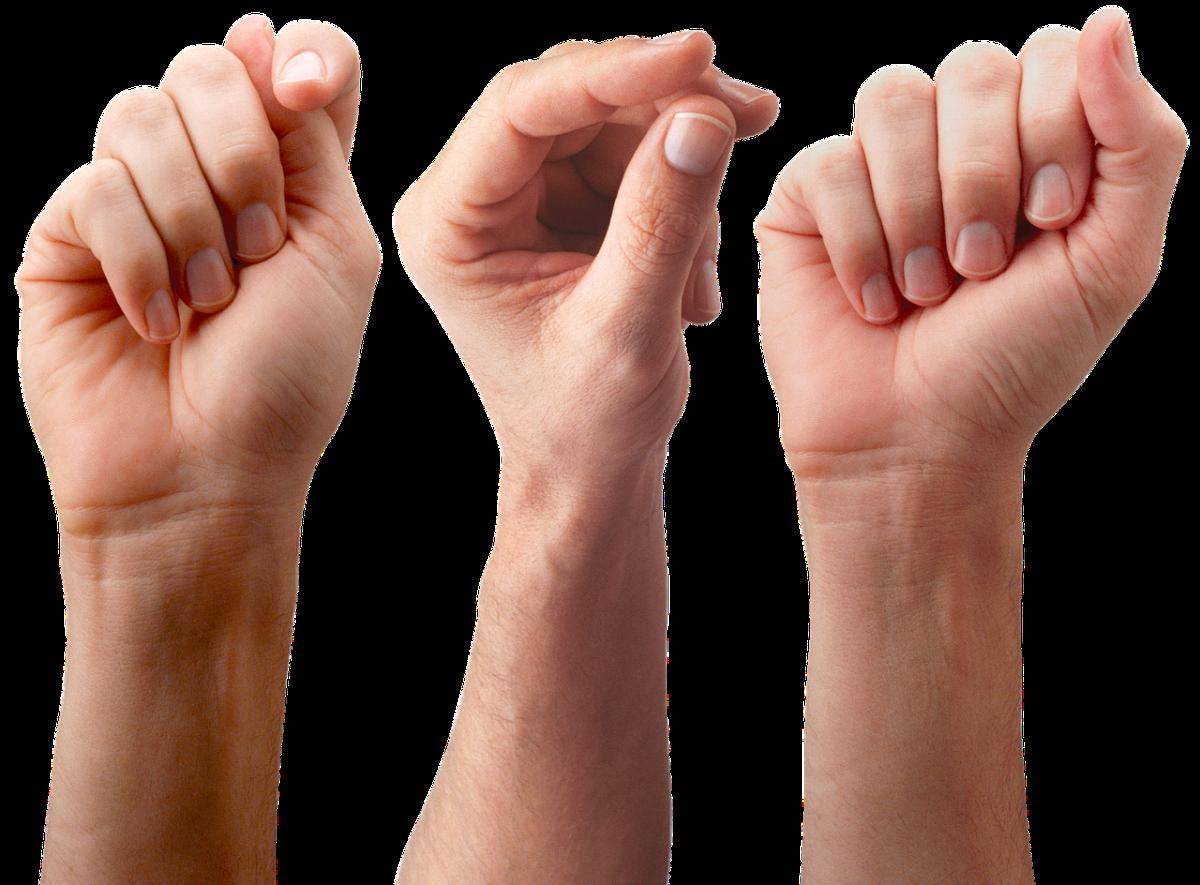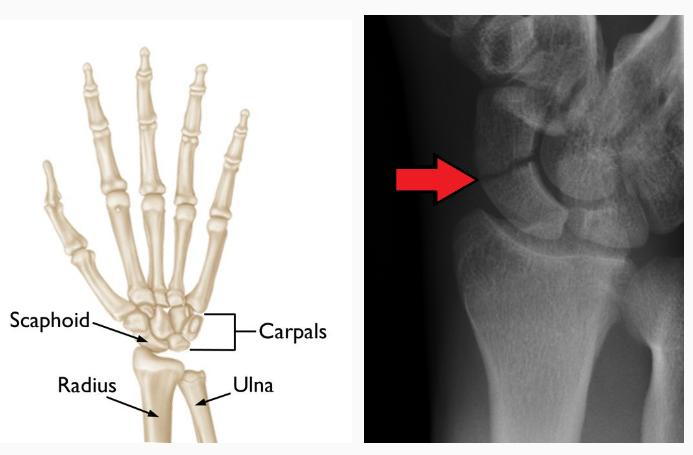Dr. Andrew's Corner - Wrist Injuries

- posted: Jun. 03, 2024

From Dr. Andrew Gutierrez, DC, CCSP
WRIST INJURY INCIDENCE
Hand and wrist injuries account for approximately 25% of all sports injuries and are some of the most common injuries that athletes experience. Incidence is growing not only due to the competitive level of high school and collegiate athletes but also due to the activity level of the general population. Injuries of the hand and wrist can have significant impact on the individual and make daily tasks difficult both on and off the field, especially if initially ignored resulting in a delay of treatment.
With so many bones, ligaments, tendons, and joints keeping hands and wrists working, there is ample opportunity for injury. The wrist is a complex joint that biomechanically transmits forces generated at the hand through to the forearm. The radial (thumb) side of the wrist carries 80% of the axial load and the ulnar (pinky) side the remaining 20% of the load. The incidence of wrist (and hand) injuries tends to be higher in those sports using the hand and wrist, and when the potential for trauma is present. The injuries are divided into 4 categories: overuse, nerve (and vascular), traumatic, and weight-bearing injuries. Overuse injuries are common in sports involving the hand and wrist, such as racquet sports, netball, basketball and volleyball. Nerve injuries are more commonly compressive neuropathies, and are seen with cyclists who may compress the ulnar nerve in Guyon's canal. Vascular injuries are uncommon and usually result from a high velocity impact from balls. Traumatic injuries are the most common and are due to either a fall on to the wrist, a direct blow, or combination of a rotatory and torsional force.
WRIST FRACTURE
The wrist is a complex joint made up of eight small wrist bones, called carpal bones, and the ends of your two forearm bones, the radius and the ulna. A break can happen anywhere in the wrist joint and are among the most common broken bones in athletes. However, if you get a wrist fracture, it’s usually in the distal radius, the place where the radius bone connects with the wrist joint. Wrist fractures typically happen when you fall onto an outstretched hand (FOOSH injury). However, they can also occur because of a direct impact to the wrist from a hard object like a puck or a hockey stick.
SCAPHOID FRACTURE
Any bone in the wrist can fracture, but of particular importance is a fracture of the scaphoid bone. The scaphoid bone is one of the carpal bones on the thumb side of the wrist, just above the radius. The bone is important for both motion and stability of the wrist joint. The scaphoid is especially important to wrist function because it links the proximal row of carpal bones (the bones closer to the radius and ulna) to the distal row of carpal bones (the bones closer to the fingers). Smooth and unrestricted (free) motion of the scaphoid is necessary to allow for optimal motion of the wrist. We recently saw a patient in our office with a scaphoid fracture 3 months post injury.
The scaphoid bone can most easily be identified when your thumb is held in a "hitch-hiking" or "thumbs-up" position. It is located at the base of the hollow made by the thumb tendons on the back of the wrist. Often referred to as the "anatomic snuffbox," this area is typically where you feel the most tenderness or pain when a scaphoid fracture occurs.
Throughout the body, blood runs from the heart to the extremities (arms and legs) — from close to the body (proximal) to the fingers and toes (distal). This direction of flow is found in most bones in the arms and legs, with the blood running from the part of the bone that is closest to the body to the part of the bone that is closest to the fingers or toes.
However, the blood supply to the scaphoid runs “backwards”: Blood enters the part of the scaphoid closest to the thumb (distal) and runs back toward the part of the scaphoid closest to the body (proximal). For this reason, fractures of the distal scaphoid heal much more quickly than fractures of the proximal scaphoid. In fact, there is a risk that fractures of the proximal scaphoid will completely disrupt the blood supply, causing part of the scaphoid to necrose, or die. This phenomenon, called “avascular necrosis,” can cause long-term problems in the wrist.

DON'T WAIT
If you are experiencing wrist pain of more than a week’s duration, do not wait to have it evaluated. It is very important to rule out any serious conditions such as a scaphoid fracture to avoid any long term complications of the injury. Our doctors can help to decipher the cause of that pain and see if any imaging such as X-ray or MRI are warranted. We can also refer you to the appropriate specialist if a more aggressive approach is needed.
Dr. Andrew Gutierrez DC, CCSP
Santa Monica Chiropractor
310-993-8482
REFERENCES:
Tria. “Sports-related hand and wrist injuries: What to look for and how to prevent them”. Health Partners.
“5 Common Hand and Wrist Injuries Among Athletes”. The Woodlands Sports Medicine Centre.
Avery III, Daniel M.; Rodner, Craig M.; Edgar, Cory M. “Sports-related wrist and hand injuries: a review”. Journal of Orthopaedic Surgery and Research. 11, 99 (2016).
Hampton, Lucinda; Jyothi Kommu, Chrysolite; Olowoyeye, Temitope; Shreif, Khloud; Acharya, Vidya; Van Niekerk, Wanda; Lowe, Tony; Jackson, Kim;. “Hand and Wrist Sports Injuries”. Physiopedia.
Howse, C. “Wrist injuries in sport.” Sports Med. 1994 Mar;17(3):163-75.
Pidgeon,Tyler Steven, MD, FAAOS; Jones, Bertrand, MD; Rozental, Tamara D., MD. “Diseases & Conditions: Scaphoid Fracture of the Wrist”. OrthoInfo. Mar. 2023.
If you have any questions about elbow or any other type of sports injury please don't hesitate to contact our office and set up an appointment.
Office Hours
Our Regular Schedule
8:00 am - 5:00 pm
8:00 am - 5:00 pm
8:00 am - 5:00 pm
8:00 am - 5:00 pm
8:00 am - 4:00 pm
9:00 am - 12:00 pm
Closed
Location
Find us on the map
Bay Chiropractic & Rehabilitation
1212 5th St Suite 300
Santa Monica, CA 90401

